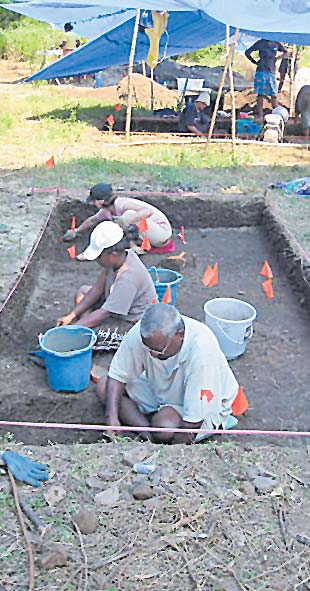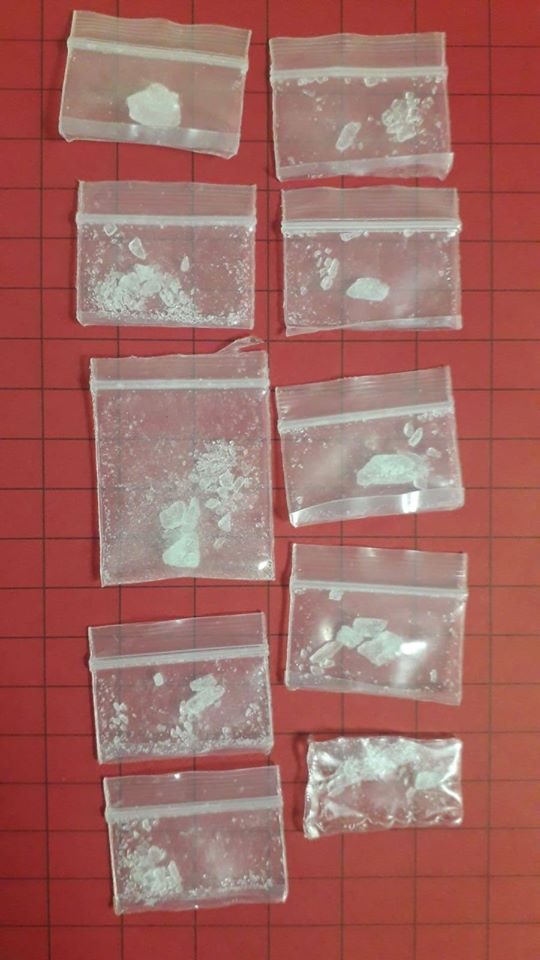The people of Vusama Village in the district of Malomalo in Nadroga/Navosa are richly endowed with nature and history.
According to information passed down orally through countless generations, their ancestors were regarded as Fiji’s first traditional salt makers.
They produced salt by cooking seawater in large handmade clay pots and used it as a barterable commodity and traditional item of value.
Today, the saltwater wells that used to provide the raw material for salt production sit idle on the maqa, the expanse of mangrove mudflats located over a kilometre outside the village.
The barren brine pits remind villagers of the past and their former glory days.
In olden times, the area may have possibly been a region that bustled with activities.
But salt and salt making are not the only popular features of Vusama.
A few kilometres from the village, adjacent to a beachfront on what is called the Rove peninsular, is a place villagers call Bourewa, believed to be the first place to be settled in Fiji before the birth of Christ.
In the local dialect, the word bourewa translates to two words, ‘bou’ meaning a bure post and ‘rewa’ meaning high rising.
“Bourewa was where we used to go to catch fish using fishing nets,” said former village headman, Saula Nadokonivalu.
The place rose to prominence in 2003 when local archaeologists led by University of the South Pacific professor, Patrick D. Nunn, discovered at Bourewa the oldest human settlement in Fiji.
Then, it was part of a sugarcane field.
Through radio carbon dating, experts believe Bourewa was established about 3100 years ago, that is, 1150 BC, on what was then a smallish island off the coast of Viti Levu.
That island has since joined the mainland.
According to Nunn the first people who arrived and settled at Bourewa had “probably travelled across at least 950 kilometres of open ocean from the islands of what we now call Vanuatu”.
“Attracted to Bourewa by its massive and pristine fringing coral reef, the people built stilt platforms across the inner reef and lived there for a few hundred years before the sea level fell and the amount of food obtainable from this reef declined,” Nunn said.
Why the Lapita people favoured living in structures built on stilts on the reef rather than simply living on one of the hills, 30-40 metres away, was a mystery that baffled Nunn and his team.
Vusama Village elders have no recollection of traditional dances (meke) or specific stories that explain how Bourewa came to be.
However, they said that according to old stories passed down from their ancestors, in the days canoes arrived at Vuda, smoke was first spotted rising from Bourewa, suggesting people already settled there.
“All those stories connected with the excavations and discoveries by Patrick Nunn and his team in 2003,” Ms Nadokonivalu said.
Nunn and his close colleagues, Sepeti Matararaba and Roselyn Kumar, spent six years excavating the Bourewa site.
In December 2008, through a grant from the Government of France, a series of six posters illustrating different aspects of the Bourewa discoveries were published and displayed at the 18th Annual Conference of the Pacific History Association in December 2008.
The Sunday Times team was invited to visit Bourewa in late August.
Bourewa is today covered by an undergrowth of shrubs and coastal trees.
The original settlers of Bourewa lived largely on seafood such as seashells and fish and were amazing potters.
In fact, pieces of pottery excavated from the area showed designs consistent with other Lapita settlements and potsherds.
They featured intricate repeated geometric patterns that occasionally included faces and figures.
The patterns were etched into the pots before firing with a comblike tool used to stamp designs into wet clay. Lapita pots were not formed using a potter’s wheel but by the use of bare hands.
Nunn’s archaeological team also found stones believed to be tools for “woodworking, shaping and smoothing”.
“That’s where the remains of a woman holding her child were dug out from,” Mr Nadokonivalu explained.
“Here a bowl of jewellery pieces was found.”
The early settlers of Bourewa seemed exceptional jewellery designers.
They made ‘bracelets’ and other jewellery using conus shells (which is suited for making rings and pendants), dilled beads and were able to carve shells and drill fine holes in them.
In January 2008, Matararaba discovered an upturned base of a pottery bowl and along both sides, in a parallel manner, was a line of three conus shells.
When he turned the bowl, he saw that it was filled with a collection of shell jewellery.
The excavators concluded the jewellery was a prised collection that had been deliberately buried, perhaps belonging to a Lapita princess.
Looking out to sea, one cannot stop wondering what lured the first settlers at Bourewa to chose the place.
“Was it the weather, the vegetation, an abundance of food, water source or the natural asthetics?” I asked myself.
Information gleaned from text on the Bourewa excavations between 2003 and 2009 trochus shells (tovu) and two local species of extinct clams or vasua were also found at Bourewa, suggesting they were exploited as sources of food protein by early settlers.
Note: This article was written using information sourced largely from the site https://patricknunn.org/ and interviews with Vusama elders.
• History being the subject it is, a group’s version of events may not be the same as that held by another group. When publishing one account, it is not our intention to cause division or to disrespect other oral traditions. Those with a different version can contact us so we can publish your account of history too — Editor.






